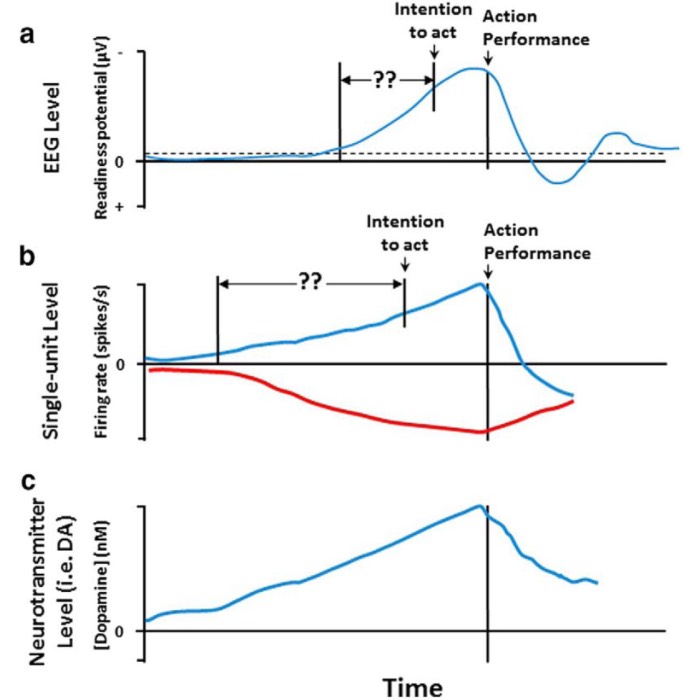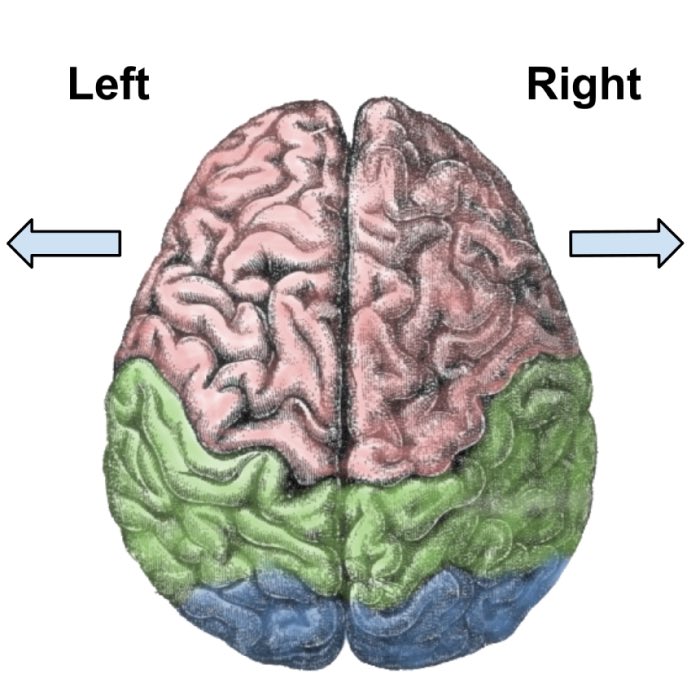How sustained meditation practice alters brain structure and function
Buddhist traditions have long emphasized the transformative power of meditation, describing it as a tool not only for achieving insight into the nature of reality but also for cultivating emotional resilience, ethical behavior, and cognitive clarity. Historically, these claims were grounded in phenomenological reports and philosophical elaborations. In recent decades, however, neuroscience has provided a growing body of empirical evidence suggesting that meditation indeed alters the brain’s structure and function. In this post, we explore the findings that link sustained meditation practice to neuroplastic changes, the underlying mechanisms involved, and the broader implications for understanding the mind-brain relationship.

Recent studies indicate that sustained meditation practice modulates functional connectivity, alters stress-related circuits, and engages neuroplastic mechanisms in regions linked to attention, interoception, and emotional regulation. In this post, we explore the empirical evidence supporting these claims. Source: Image generated with DALL·E 2.
Meditation and neuroplasticity: An overview
Neuroplasticity refers to the brain’s capacity to reorganize itself by forming new neural connections throughout life. Once thought to be largely fixed after early childhood, the adult brain is now known to be highly adaptable, capable of changing in response to learning, experience, and environmental demands. Meditation, as an intensive form of mental training, has emerged as a particularly potent catalyst for such changes. Although the field is growing, it remains methodologically diverse, and interpretations must account for differences in study design, controls, and measurement sensitivity.
Studies using structural MRI, functional MRI (fMRI), diffusion tensor imaging (DTI), and electroencephalography (EEG) have documented that long-term meditation practitioners exhibit measurable differences in brain anatomy and activity compared to non-meditators (Lazar et al., 2005; Hölzel et al., 2011; Tang et al., 2010; Brewer et al., 2011). However, cross-sectional designs cannot exclude the possibility that individuals with certain cognitive or emotional profiles are more inclined to take up meditation in the first place. Longitudinal studies help address this but remain less common. These changes are not limited to specific styles such as mindfulness meditation (vipassanā) or compassion meditation (mettā), but appear across a range of contemplative practices.
Structural changes associated with meditation
Research indicates that sustained meditation is associated with increases in cortical thickness, gray matter density, and white matter integrity in specific brain regions. Key findings include:
Increased cortical thickness
Lazar et al. (2005) found that experienced meditators showed greater cortical thickness in the prefrontal cortex and right anterior insula compared to control subjects. The study involved structural MRI scans of 20 long-term meditation practitioners with an average of nine years of practice, compared against 15 control participants matched for age, sex, and education. The correlational nature of this study makes it impossible to rule out pre-existing differences between groups, a limitation openly acknowledged by the authors. The researchers focused on areas of the brain associated with attention, interoception, and sensory processing. The prefrontal cortex plays a central role in executive functions such as planning, decision-making, and moderating social behavior, while the anterior insula is critically involved in interoception — the awareness of internal bodily sensations — as well as emotional regulation and empathy. These findings suggest that sustained meditation practice may reinforce brain regions essential for maintaining attentional control, emotional balance, and self-awareness, supporting traditional Buddhist claims about the transformative cognitive and emotional effects of meditative training.
Greater gray matter concentration
Hölzel et al. (2011) conducted a longitudinal study in which participants underwent an eight-week Mindfulness-Based Stress Reduction (MBSR) program, including weekly group sessions and daily home meditation practice. Structural MRI scans were taken before and after the intervention to assess changes in gray matter density. The study revealed that participants exhibited increased gray matter density in the hippocampus, a region crucial for learning, memory formation, and emotional regulation. Although these effects were statistically significant, later replications often found smaller effect sizes, consistent with the modest scale of short-term neuroplastic change. Simultaneously, there was a reduction in gray matter density in the amygdala, which is involved in processing fear and stress responses. These structural changes correlated with self-reported reductions in perceived stress, suggesting that even relatively short periods of meditation training can produce measurable and functionally significant neuroplastic changes in the brain.
Enhanced white matter connectivity
Tang et al. (2010) conducted a randomized controlled study in which participants engaged in integrative body-mind training (IBMT), a form of mindfulness meditation originating from Chinese contemplative traditions. Participants practiced IBMT for 30 minutes a day over a period of 11 hours across several weeks. IBMT includes breathing exercises and body-awareness elements in addition to meditation, which may contribute to the observed effects. Using diffusion tensor imaging (DTI), the researchers measured changes in fractional anisotropy, a marker of white matter integrity, specifically in the anterior cingulate cortex, a brain region associated with self-regulation, cognitive control, and emotional regulation. The study found significant increases in white matter integrity in pathways related to self-regulation compared to a relaxation training control group. These findings suggest that meditation can enhance the brain’s communication efficiency and strengthen circuits critical for emotional control and attentional focus even after relatively short-term practice.
Functional changes linked to meditation
In addition to altering brain structure, meditation also modulates brain function in ways that align with Buddhist psychological insights.
Regulation of the default mode network (DMN)
The default mode network, a set of interconnected brain regions active during rest and mind-wandering, has been implicated in self-referential thought and rumination. fMRI studies (e.g., Brewer et al., 2011) show that experienced meditators exhibit reduced activity in the DMN during meditation and, even at rest, display greater functional connectivity between DMN regions and attentional networks. This suggests a reduced tendency toward spontaneous self-focused thinking and a greater capacity for present-centered awareness. It is important to note, however, that DMN modulation is style-specific; some open-monitoring practices and nondual awareness meditations show increased or reorganized DMN coherence rather than simple suppression.
Increased activity in attention and emotion regulation networks
Meditators demonstrate heightened activation in the anterior cingulate cortex (ACC), dorsolateral prefrontal cortex (DLPFC), and insula, regions that play crucial roles in attention regulation, error detection, and emotional awareness. Functional MRI studies (e.g., Allen et al., 2012; Tang et al., 2015) have shown that the ACC is significantly engaged during meditation practices requiring sustained attention and conflict monitoring. Similarly, the DLPFC is associated with top-down executive control, crucial for maintaining focus during mindfulness tasks, while the insula supports interoceptive awareness and the conscious experience of emotions. These functional changes have been correlated with subjective reports of improved concentration, enhanced emotional stability, and increased empathetic sensitivity among long-term meditation practitioners. Together, these findings suggest that meditation strengthens key networks involved in cognitive control and emotional regulation.
Altered stress reactivity
Several studies indicate that meditation dampens both the neural and hormonal responses to stress. For instance, mindfulness practice has been associated with decreased activation of the amygdala when exposed to emotional stimuli, suggesting a reduced reactivity to perceived threats. Concurrently, mindfulness meditation has been shown to modulate the hypothalamic-pituitary-adrenal (HPA) axis, leading to lower levels of cortisol, the body’s primary stress hormone (Creswell et al., 2016; Hölzel et al., 2010). In a notable study by Creswell and colleagues, older adults who participated in an eight-week mindfulness-based stress reduction (MBSR) program exhibited significant reductions in cortisol and self-reported loneliness, which were linked to changes in pro-inflammatory gene expression. Additionally, Hölzel et al. (2010) found that reduced amygdala gray matter density after mindfulness practice correlated with decreases in perceived stress, suggesting that meditation may induce structural as well as functional brain changes that contribute to emotional resilience.
Mechanisms of change: Hypotheses and open questions
Although the empirical evidence for meditation-induced brain changes is robust, the precise mechanisms remain a topic of ongoing research. Proposed mechanisms include:
- Repeated activation of neural circuits (“use it or lose it”) leading to structural strengthening, often referred to as Hebbian plasticity, where simultaneous activation of neurons strengthens their synaptic connections (Hebb, 1949).
- Changes in neurotransmitter systems, particularly increases in gamma-aminobutyric acid (GABA), a neurotransmitter associated with calming neural activity, relaxation, and focused attention (Streeter et al., 2007). However, Streeter et al. examined Yoga practices combining movement, breathing, and meditation, thus GABA changes may not be due to meditation alone.
- Alterations in inflammatory and immune system markers, indicating that meditation may exert systemic effects beyond the brain, influencing the body’s stress-response systems and promoting overall health (Black & Slavich, 2016).
Open questions remain regarding the specificity of changes to particular meditation styles, such as focused attention versus open monitoring practices (Lutz et al., 2008), the dose-response relationship, i.e., how much and how long one must practice for measurable effects to occur, and individual differences that may mediate the extent of neuroplastic change, including genetic predispositions and baseline mental health conditions.
Implications and broader reflections
The convergence between Buddhist introspective traditions and modern neuroscience supports the view that the mind is not a static entity but a dynamic, trainable process. In Buddhist philosophy, mental cultivation (bhāvanā) is central to the path toward liberation; neuroscience now corroborates that such cultivation has observable effects on the brain.
Moreover, these findings challenge strictly dualistic notions that separate mind and body, suggesting instead a deeply intertwined, mutually conditioning relationship. They also open practical possibilities for therapeutic interventions in clinical psychology, psychiatry, and education, where mindfulness-based programs have been increasingly applied to treat conditions ranging from depression and anxiety to chronic pain and addiction.
Conclusion
Meditation, long regarded within Buddhist traditions as a transformative practice, is now recognized by neuroscience as a potent driver of neuroplasticity. Evidence suggests that meditation enhances attention, emotional regulation, stress resilience, and self-awareness through both structural and functional brain changes. However, critical reflection reveals that while these findings are promising, they come with important caveats.
First, many neuroimaging studies rely on relatively small sample sizes and may be susceptible to selection biases, particularly when studying long-term meditators. Furthermore, the heterogeneity of meditation practices complicates the interpretation of results: mindfulness-based interventions differ substantially from intensive monastic practices, and different styles may induce distinct neuroplastic changes.
Additionally, while changes in brain structure and function are observable, the causal relationship between meditation and well-being outcomes remains complex and multifactorial. Variables such as baseline psychological health, lifestyle factors, and motivational differences can influence outcomes in ways that are not always controlled for.
Despite these challenges, the convergence between Buddhist insights and empirical neuroscience represents a significant step toward a more integrated understanding of human consciousness. Buddhism’s non-essentialist view of the mind as dynamic and trainable resonates with contemporary models of brain plasticity, offering a philosophical framework that may complement scientific inquiry. As research methodologies advance, future studies with greater rigor and nuance will further clarify the specific conditions under which meditation fosters beneficial brain changes and psychological growth.
References and further reading
- Brewer, J. A., Worhunsky, P. D., Gray, J. R., Tang, Y. Y., Weber, J., & Kober, H., Meditation experience is associated with differences in default mode network activity and connectivity, 2011, Proceedings of the National Academy of Sciences, 108(50), 20254–20259, DOI: 10.1073/pnas.1112029108
- Creswell, J. D., Irwin, M. R., Burklund, L. J., Lieberman, M. D., Arevalo, J. M., Ma, J., & Cole, S. W., Mindfulness-Based Stress Reduction training reduces loneliness and pro-inflammatory gene expression in older adults: A small randomized controlled trial, 2016, Brain, Behavior, and Immunity, 26(7), 1095–1101, DOI: 10.1016/j.bbi.2012.07.006
- Hölzel, B. K., Carmody, J., Vangel, M., Congleton, C., Yerramsetti, S. M., Gard, T., & Lazar, S. W., Mindfulness practice leads to increases in regional brain gray matter density, 2011, Psychiatry Research: Neuroimaging, 191(1), 36–43, DOI: 10.1016/j.pscychresns.2010.08.006
- Lazar, Sara W.; Kerr, Catherine E.; Wasserman, Rachel H.; Gray, Jeremy R.; Greve, Douglas N.; Treadway, Michael T.; McGarvey, Mettae; Quinn, Brian T.; Dusek, Jeffery A.; Benson, Herbertf; Rauch, Scott L.; Moore, Christopher I.; Fischl, Bruce, Meditation experience is associated with increased cortical thickness, 2005, NeuroReport, 16(17), 1893–1897, DOI: 10.1097/01.wnr.0000186598.66243.19
- Tang, Y. Y., Lu, Q., Geng, X., Stein, E. A., Yang, Y., & Posner, M. I. Short-term meditation induces white matter changes in the anterior cingulate, 2010, Proceedings of the National Academy of Sciences, 107(35), 15649–15652, DOI: 10.1073/pnas.1011043107
- Allen, M., Dietz, M., Blair, K. S., van Beek, M., Rees, G., Vestergaard-Poulsen, P., & Roepstorff, A. Cognitive-affective neural plasticity following active-controlled mindfulness intervention, 2012, The Journal of Neuroscience, 32(44), 15601-15610, DOI: 10.1523/JNEUROSCI.2957-12.2012
- Tang, Y. Y., Hölzel, B. K., & Posner, M. I. The neuroscience of mindfulness meditation, 2015, Nature Reviews Neuroscience, 16(4), 213-225. DOI: 10.1038/nrn3916
- Black, D. S., & Slavich, G. M. Mindfulness meditation and the immune system: a systematic review of randomized controlled trials, 2016, Annals of the New York Academy of Sciences, 1373(1), 13-24. DOI: 10.1111/nyas.12998
- Donald O. Hebb, The Organization of Behavior, 1949, Wiley: New York, DOI: 10.1016/s0361-9230(99)00182-3
- Lutz, A., Slagter, H. A., Dunne, J. D., & Davidson, R. J. Attention regulation and monitoring in meditation, 2008, Trends in Cognitive Sciences, 12(4), 163-169, DOI: 10.1016/j.tics.2008.01.005
- Chris C. Streeter, J. Eric Jensen, Ruth M. Perlmutter, Howard J. Cabral, Hua Tian, Devin B. Terhune, Domenic A. Ciraulo, and Perry F. Renshaw, Yoga Asana sessions increase brain GABA levels: a pilot study, 2007, The Journal of Alternative and Complementary Medicine, 13(4), 419-426, DOI: 10.1089/acm.2007.6338
- Calderone A, Latella D, Impellizzeri F, de Pasquale P, Famà F, Quartarone A, Calabrò RS, Neurobiological Changes Induced by Mindfulness and Meditation: A Systematic Review, 2024, Biomedicines, 12(11):2613. DOI: 10.3390/biomedicines12112613ꜛ. PMID: 39595177; PMCID: PMC11591838ꜛ










comments